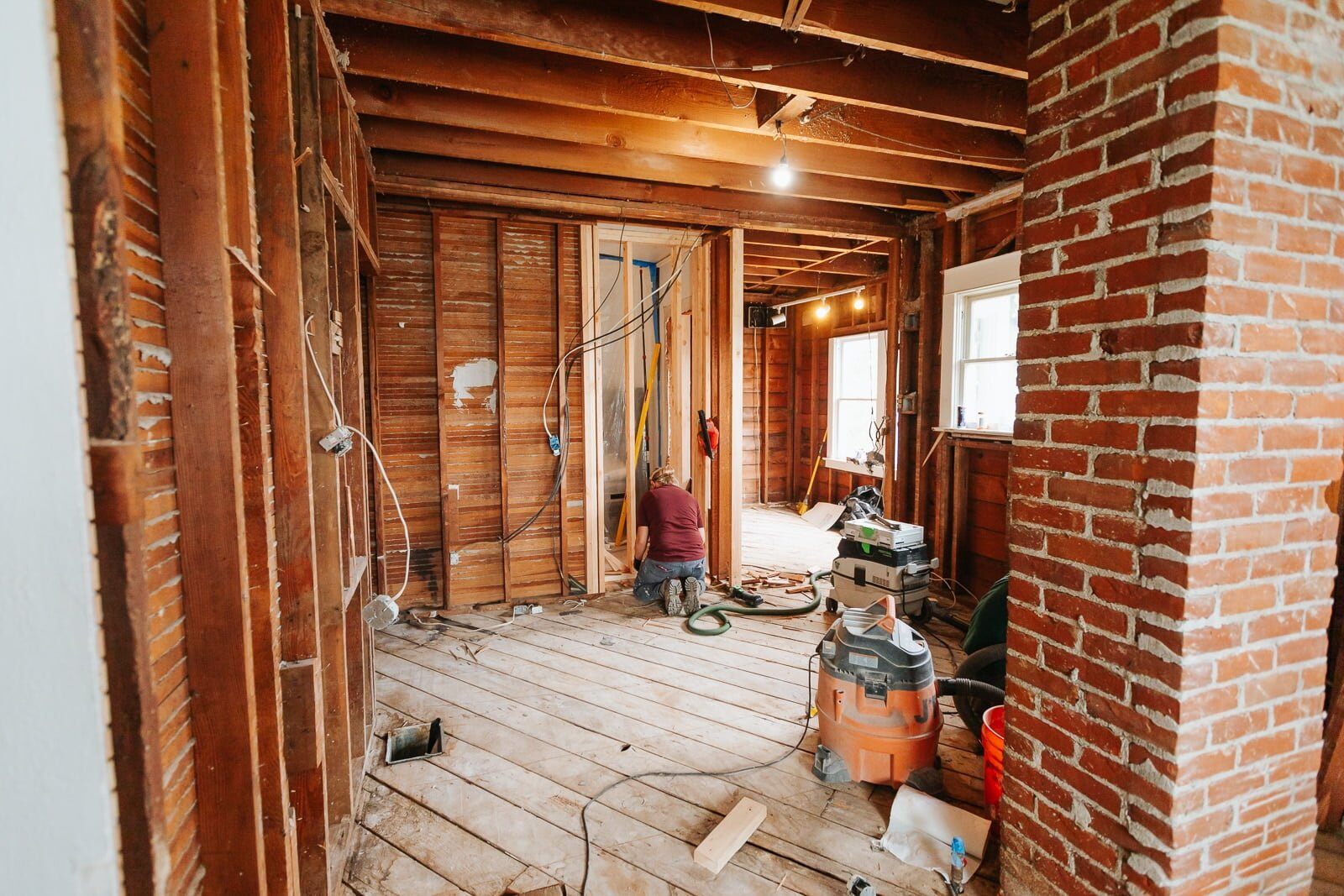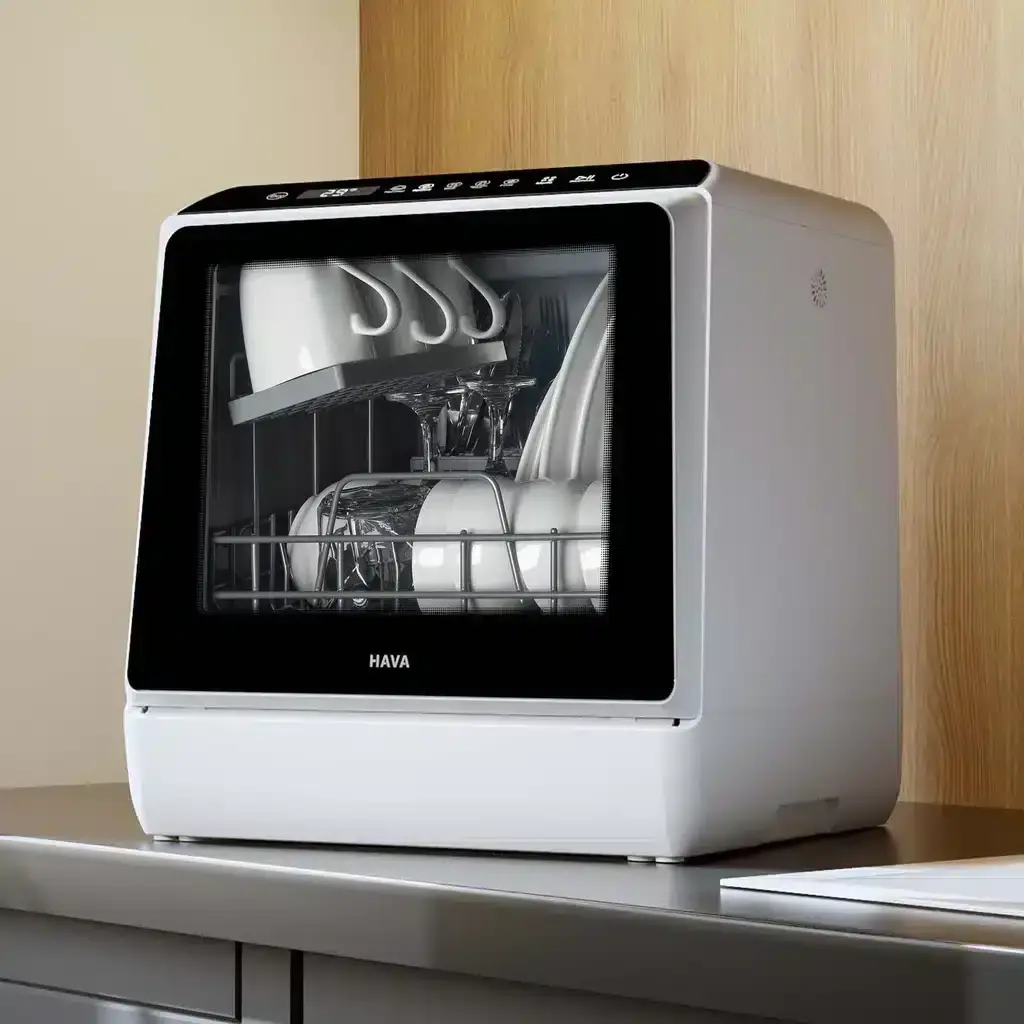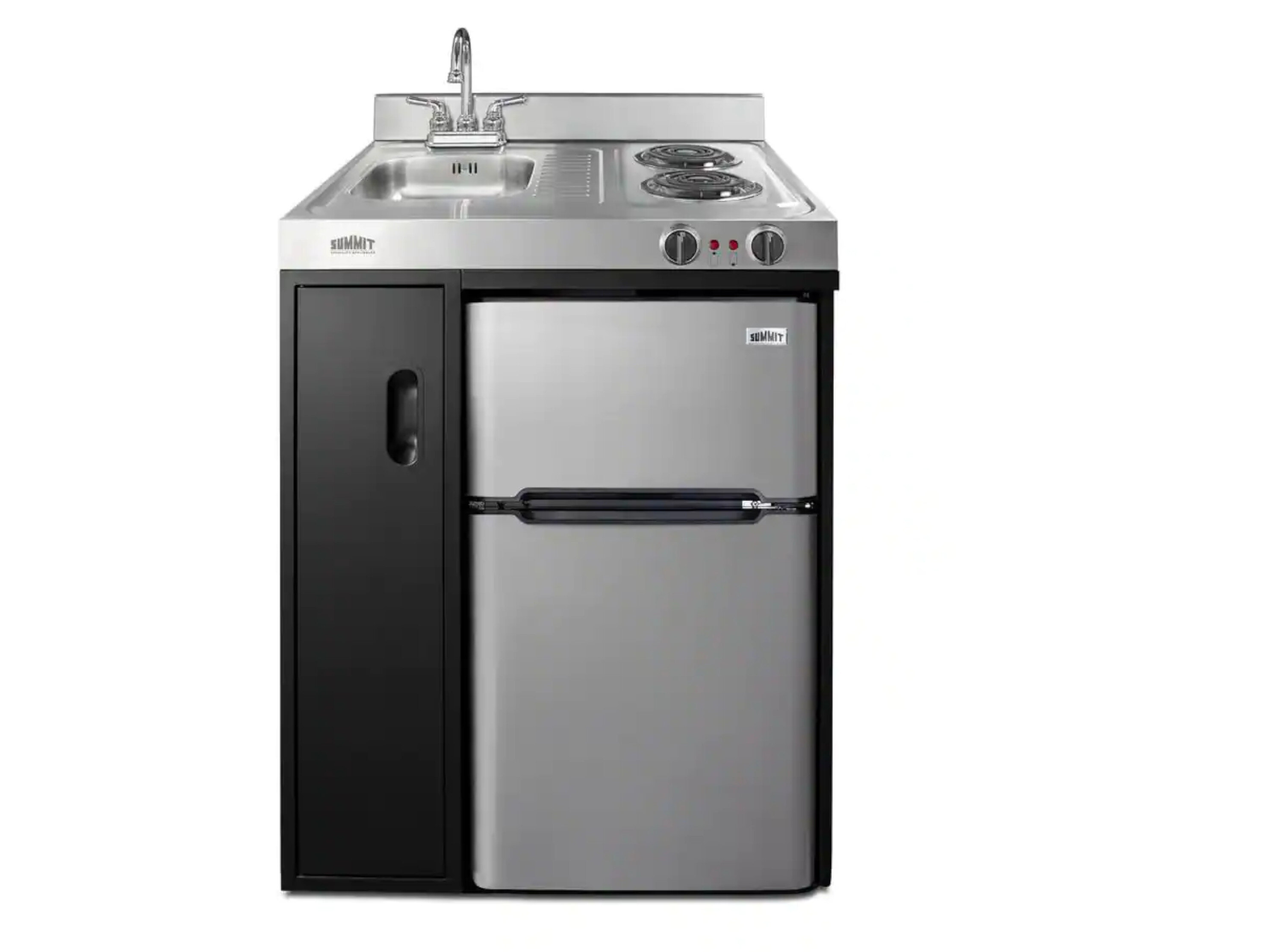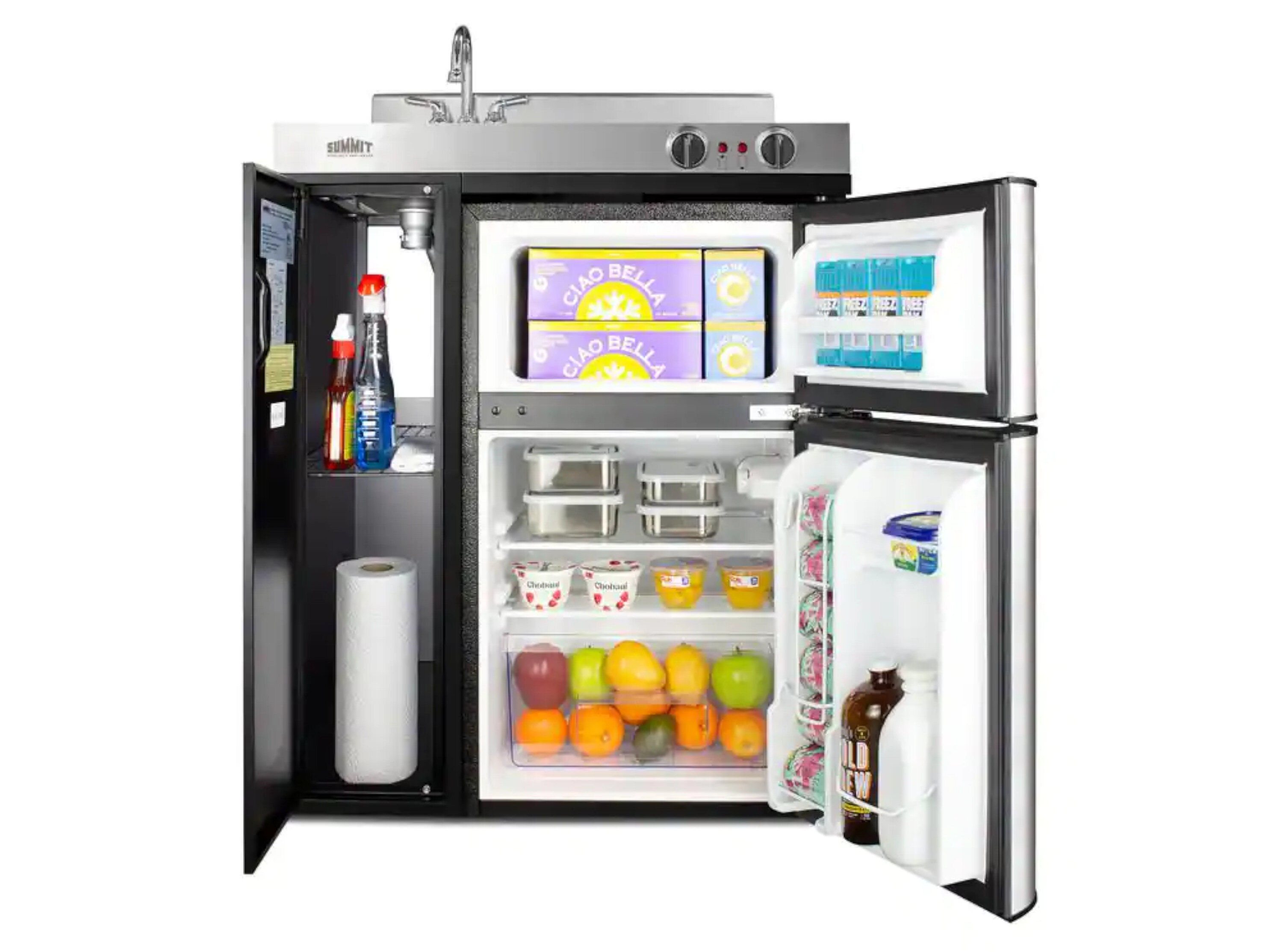You’re excited to finally remodel and have the kitchen you’ve always dreamed of. However, while a kitchen remodel will enhance your home and benefit your life for years to come, there’s still one challenge left to face. The remodel process will leave you without a full kitchen for several weeks. Fortunately, you can set up a temporary kitchen station during the remodel to hold you over.
Our team at Lamont Bros. performs dozens of kitchen remodel projects every year. We’ve seen first hand how frustrating it can be for homeowners to be without a kitchen while they wait for their remodel’s completion. As a result, we’ve worked with several of our clients to help them plan and prepare for their remodel by setting up a temporary kitchen. If you’re concerned about needing a place to cook while your kitchen is under construction, this article is for you.
Below, we’ll discuss everything you need to know to prepare a temporary kitchen to use during your remodel. After reading it, you should be able to identify your own needs and assemble a temporary kitchen that meets them. The specific topics we’ll discuss include:
- What is a temporary kitchen?
- How to assemble a temporary kitchen
- Factors to consider for your temporary kitchen
What is a Temporary Kitchen and Why do you Need one?
During a kitchen remodel, your regular kitchen may be torn down and its appliances disconnected, making it impossible to cook or eat there. Additionally, the work area contains several unseen safety hazards. Even after the build team has packed up and gone home, you should still refrain from entering the kitchen area.
The typical kitchen remodel can take anywhere from 7-12 weeks. A temporary kitchen allows you to continue preparing meals and storing food in your home during the remodel process. It typically includes basic appliances like a refrigerator, a microwave, a hot plate, and a toaster oven, as well as some storage space for food and utensils. Using a temporary kitchen can help you avoid the expense of eating out every day or relying on unhealthy, pre-packaged convenience foods.

How to Assemble a Temporary Kitchen
To make sure your temporary kitchen will serve you well during your remodel, you’ll want to carefully plan out the details. Here is a list of steps to plan your setup.
Decide the location
The first thing you’ll want to decide is where in the home to put your temporary kitchen. You’ll want to make sure to keep it far away from the work area, so don’t plan to set up shop right outside the protective barriers. Typically, a spare bedroom, family room, or garage are all good candidates for a temporary kitchen location.
Ideally, your temporary kitchen should be located in a space that is easily accessible from the rest of your home, so you don’t have to carry food and dishes too far. Also, cooking can generate a lot of heat, steam, and odors, so it’s important to set up your temporary kitchen in a space with adequate ventilation.
Reuse available items
At the start of your remodel, your build team will begin by removing the appliances from the space. This presents a great opportunity to move any relevant appliances into your temporary setup.
If possible, try to keep your old refrigerator and microwave as part of the temporary kitchen, even if you plan to throw them out after. It makes much more sense to use what you already have than to go purchase appliances for a relatively short timeframe.
Purchase any necessary items
That said, you’ll want to purchase any additional appliances that you would like as part of your temporary kitchen. Depending on how much money you’re willing to spend on your temporary kitchen, you could have anything from a basic, rudimentary cooking station all the way up to a fully functional mini-kitchen. Make sure to purchase any additional items in advance so they are ready to use when construction begins.
At the very least, you’ll probably want a hotplate and a toaster oven for cooking with heat. If you’d prefer not to wash dishes by hand, you might also choose to add a countertop dishwasher. Slow cookers are also a great option if you’d prefer to prepare your ingredients in the morning, and then let the slow cooker do the rest of the work for you. This can save you a lot of time, especially if you have a busy schedule.
In any case, make sure to purchase any additional items in advance so they are ready to use when construction begins.

Have a sink nearby
The sink is an important feature of any kitchen. However, since they need plumbing and drainage, it’s difficult to install a temporary sink. That’s why it’s important to make sure there is at least one sink nearby where you can wash dishes and retrieve water for cooking.
If you have a utility sink in the home, you may want to consider setting up the temporary kitchen next to it. Otherwise, you may choose to use a bathroom sink or tub to wash dishes. If you go the tub route, a detachable handheld showerhead can make cleaning much easier.
You may also decide that having a sink as part of your temporary kitchen is non-negotiable. In this case, you can hire a plumber to pipe in a new temporary sink for the duration of your remodel, though bear in mind that this can be very expensive. Another popular option is to purchase an all-in-one mini kitchenette unit.
These products are typically about 30 inches wide and feature a small sink, stovetop, refrigerator, and storage cabinet. While they will require both plumbing and electrical lines to work properly, a setup like this can save on space and offer a lot of conveniences.


Stick to disposable plates and flatware
Temporary kitchens are usually smaller and have less storage space than regular kitchens. You also may not have access to a dishwasher or running water. Using disposable plates and flatware can help you save space and avoid clutter, and it can simply be thrown away after use. That way, you won’t have to wash dishes after every meal.
What to Consider when Planning a Temporary Kitchen
As you prepare to use your temporary kitchen, it’s important to keep in mind the limitations and alternatives to cooking in your home during the remodel.
Don’t plan any elaborate meals
It’s important to keep in mind that a temporary kitchen isn’t a real kitchen. The space is limited and the available cooking appliances are smaller, and there may be no dishwasher. You probably won’t be cooking any gourmet 5-course meals or inviting guests over for dinner. However, it’s there when you need to heat up a can of soup or make some sandwiches.
Expect to eat out more often
While having a temporary kitchen can certainly help you continue to prepare meals at home during a remodel, you’ll probably still find yourself eating out more often than usual. After all, you probably won’t want to cook dinner every night in a makeshift kitchen.
While it helps maintain normalcy, you should still be open to the idea of eating out more often than usual. Fortunately, this can be an opportunity to try new restaurants and cuisines and enjoy time away from the renovation chaos.
With cookware, less is more
You’re not going to be cooking the same types of meals you cooked in your previous kitchen. Don’t complicate things by bringing more cookware than you need. 1-2 pans, a few spatulas, and a small bin of cooking utensils should suffice. Plus, the fewer items you use for cooking, the fewer items you have to clean, which is great news since there’s no dishwasher.
Work with a professional kitchen designer
A professional designer can help you identify an effective location and layout for your temporary kitchen. They can also assist you in sourcing any additional items you may need. If you’re already working with one to design your kitchen remodel, it may be worth asking your designer for help in planning your temporary kitchen, as well.
Rather than face the hassle of setting up your temporary kitchen yourself and purchasing everything separately, your design team can handle the heavy lifting for you. If you request it, they can design and set up a temporary kitchen to meet your needs in the interim and include the cost in the total budget for your remodel.
Want to learn more about kitchen remodeling?
Now that you’re an expert on temporary kitchens, do you feel ready to start planning your own? If so, keep up your research! If you’re planning a kitchen remodel and want an extensive guide on all the information you need to remodel your kitchen, check our Ultimate Kitchen Remodel Guide. Here, you can read everything you need to know about transforming your kitchen.
Want to speak directly with a remodel design professional to discuss your vision for your remodel? If so, click the button below to schedule a free consultation with one of our design consultants.



